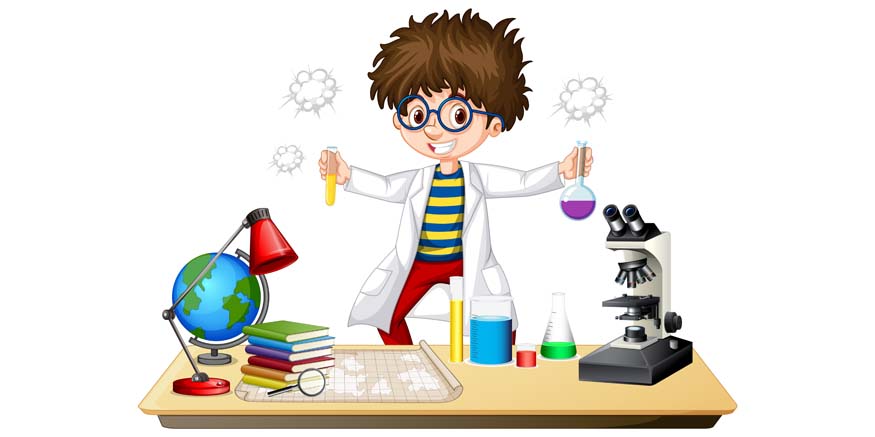Amazing Physics Experiments for Kids: Learn New Things Everyday

Physics is the branch of science that becomes the nightmare of students. You must have heard this, right? Well, that’s not its typical definition. By definition, it is the study of physical phenomena. And it can become your favourite subject if you understand it well.
Seeing their child struggling with a subject must be painful. First, You need to convince your child there is nothing to fear, for “physics is not going to eat you up if you forget a formula.” Difficult concepts do take time before they get completely ingrained in the mind. Even the most romantic students of science have found several physics experiments and concepts hard to grasp. That doesn’t mean they had skipped those parts rather, they kept grinding until they mastered it. Physics is fun! If you don’t believe it, then just read through the article. We have the proof here!
Physics experiment to understand gravity
Before going ahead with the experiment, let us understand what gravity is. It is the force of attraction between any two bodies having mass. The best example of gravity is the force by which the earth attracts us towards its centre. This is the sole reason why you always land on the ground when you jump and not fly away like Hulk or Superman! Now that you know about gravity, let’s learn a few fun physics experiments that prove it exists.
Time for the Experiment!
As already mentioned, gravity acts on all bodies. No matter how light a body is, if it starts falling from a height, then it eventually reaches the ground. Now, let us design one of the well-known gravity experiments!
To perform this physics experiment, you will need three things: one feather, one plastic ball, and a medium-sized stone.
Determine a height from which you will be dropping all three. Now, drop them all one after the other and note the time they hit the ground with a stopwatch. You will see the stone fall in the shortest time, followed by the ball and then the feather. This is because the stone was the heaviest of the three and thus experienced the highest force of gravity. You can verify this by weighing the three separately.
Motion and gravity
From the previous experiment, you must have observed the heaviest body took the shortest time to reach the ground and experienced the highest force of gravity. Therefore, there must be a relationship between this movement (also called motion) and gravity. We will conduct one of the well-known physics experiments to further explore this.
Time for the Experiment!
We will be needing a cardboard and a toy car for this one. Keep the cardboard inclined to the wall and place the toy car on it. Now release the toy car from the upper portion of the incline and watch it move. Gravity applies a force on it and accelerates its motion. Thus the toy car while moving downwards moves with an increasing speed. This depicts the relationship between gravity and motion.
Understanding simple machine
A proper understanding of simple machines helps in the better understanding of complex concepts of bigger, heavier, and more complicated mechanics.
So, what is exactly a simple machine? Well, it helps you to do work. It certainly does not lower the amount of work you need to do but it definitely lowers the force you have to exert and the distance it has to be exerted.
There are six types of simple machines:
- Lever: A lever is a body that is elevated at one point called the fulcrum. Here you apply a small force for a longer distance. This means, W = F x D, where W is the work, F is the force and D is the distance. Thus, your work remains the same. An example of this machine is a wheelbarrow.
- Pulley: It is a system of grooved wheels around which runs a rope. You attach the weight on one end of the rope and pull the rope from the other end. This kind of system is used to draw water from wells.
- Inclined plane: This is a stiff plank inclined between two levels. It helps push an object up to a higher level instead of being lifted to its destination, which certainly requires more force. An example of this simple machine is a thick plank used to load and unload materials in a truck.
- Wheel & axle: The system involves a wheel that is attached to a rod. On the rod, you have the rope. As you rotate the wheel the rope coils up in the rod and you can easily lift the object. An example of this machine is the bucket system at a well.
- Wedge: Putting two inclined planes back to back helps you in making a simple wedge. It helps to force two objects apart. An example of this simple machine is a chisel.
- Screw: A screw is an inclined plane that is engraved around a pole. Unlike the wedge, it helps to keep two objects together.
Fun Fact: All the complex machine uses a complex combination of all these simple machines.
Physics is a subject based on real-life observations. All the physics experiments are quite easy to grasp if you know the underlying concept and what exactly you are trying to prove. The problem occurs when you find difficulty in visualising the concepts and physics experiments discussed in the textbooks. You can always take the help of the World Wide Web and search out the video tutorials that conduct various physics experiments. If you are a parent of a child struggling with physics, a good way would be to brush up on your concepts and teach your child in a way he can understand
At Billabong High International School, we teach students even the most difficult concepts in the easiest way possible. With our experts, your child would grasp every concept behind those physics experiments with ease. To learn more about our curriculum, contact us today.






